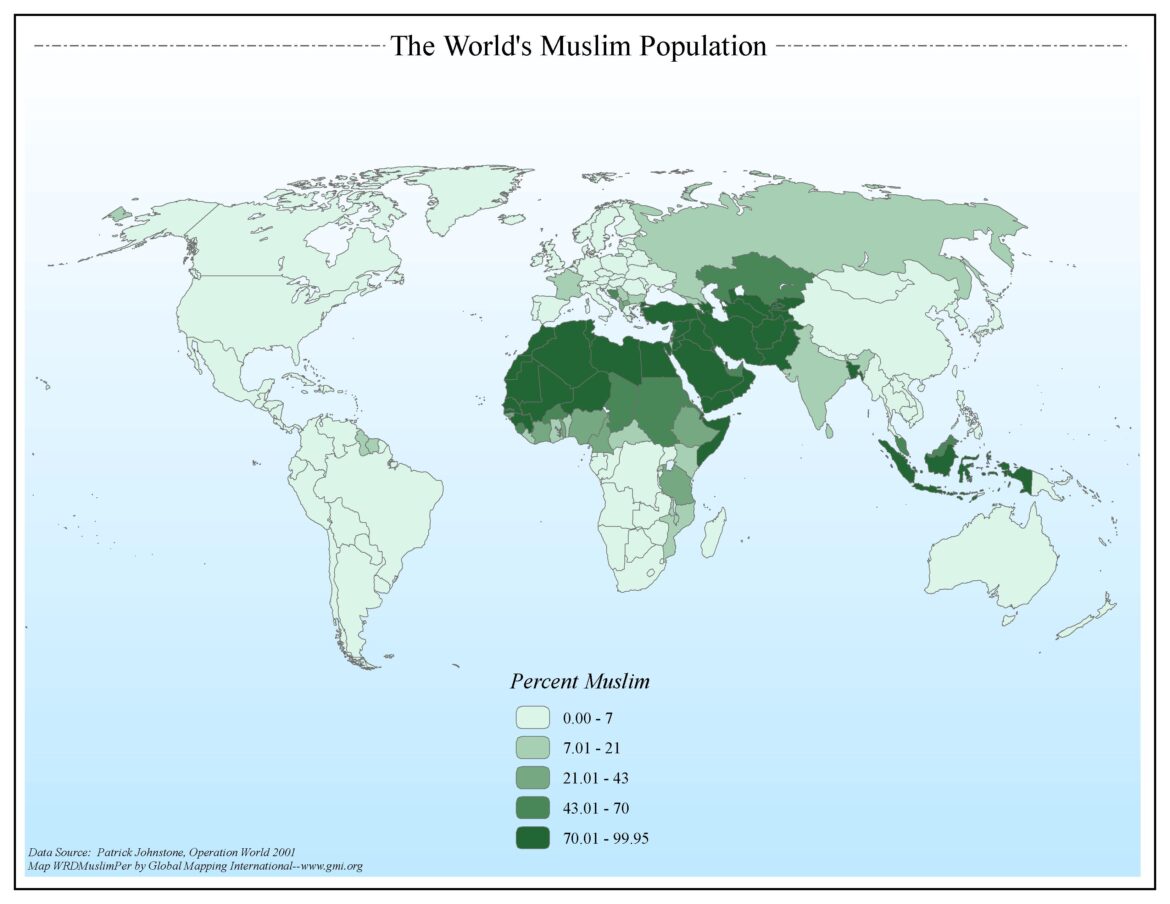In the tapestry of world religions, Islam stands prominently, with over a billion adherents globally. This significant demographic warrants exploration not solely from a numerical perspective but also in understanding the intricate interplay of geography, culture, and faith that contributes to the Muslim population’s distribution. The complexities of this religion and its followers evoke curiosity, not only among scholars and theologians but also within the broader cultural landscape.
As of recent estimates, the global Muslim population is approaching two billion, making Islam one of the fastest-growing religions in the world. Understanding where these followers reside might provide insights into their diverse practices, interpretations, and experiences in different regions. The allure of the Muslim faith transcends mere numbers; it encapsulates a rich heritage and a multitude of cultural expressions, which deserve further contemplation.
The regions with the highest concentrations of Muslims are the Middle East, North Africa, South Asia, and increasingly, parts of sub-Saharan Africa and Southeast Asia. These geographic divisions not only signify where Muslims live but also hint at the historical, political, and social evolutions that have shaped their communities.
In the Middle East and North Africa, one can witness the heart of Islam’s origin. Countries like Indonesia, Pakistan, India, and Bangladesh are home to vast populations of Muslims, representing a rich tapestry of ethnicities and traditions. In Indonesia, the largest Muslim nation in the world, Islam influences daily life, from the customs surrounding Ramadan to the incorporation of Islamic teachings in education systems. Here, the adherence to Islamic principles often intertwines seamlessly with local customs, creating a unique cultural blend.
South Asia is particularly compelling, as it harbors a vast array of interpretations of Islam. The subcontinent’s historical complexities, including colonial encounters and the persistent dialogue between different religious traditions, have resulted in a rich diversity of thought and practice. The existence of significant Muslim communities in India, while often politically fraught, showcases a blend of coexistence and distinctiveness among varying religious groups.
Furthermore, Africa’s growing Muslim population is a point of fascination, as it is predicted that by 2050, the continent will host a predominant share of the global Muslim populace. The spread of Islam in African nations, often through trade and cultural exchange, signifies a transformative period where religious affiliation intertwines with national identity, reflecting local cultures while fostering a sense of belonging to a larger global community.
Turning to Europe, the Muslim community has burgeoned due to migration and demographic changes, resulting in significant Muslim enclaves in urban centers. Countries such as France, Germany, and the United Kingdom have witnessed substantial Muslim immigration over the last few decades, leading to an increase in cultural awareness and, at times, contention. The implications of these changes are profound, influencing not only religious practices but also social policies, media representations, and interfaith dialogues.
The fascination with the Islamic faith often extends into theological inquiries, as Christians ponder the contrasts and similarities between their beliefs and those of Muslims. The shared lineage traced back to Abraham, the figure revered in both religions, beckons consideration of how dialogue can transcend doctrinal differences. This exploration could encourage a reconciliation of beliefs while fostering mutual respect and understanding.
The dynamics of faith within the Muslim populations are equally intriguing. The presence of differing sects, predominantly Sunni and Shia, introduces layers of complexity in understanding the unity and divergence within Islam. Each group carries its rituals, traditions, and interpretations of sacred texts, contributing to the rich mosaic of Islamic life.
Moreover, how Muslims engage with their faith in the context of modernity poses further intriguing discussions. The interplay between tradition and contemporary challenges, such as globalization and secularism, has shaped many younger Muslims’ perspectives. Engaging with social media, participating in global movements for social justice, and embracing diverse interpretations of Islamic teachings signify a transition that may lead to a renaissance within the faith.
In summary, the Muslim population globally is not merely a statistic to be dissected but represents a constellation of beliefs, identities, and transformations. By examining the Muslim presence worldwide through a Christian lens, one can appreciate the depth of human experience in matters of faith. This exploration invites a respectful examination of the complexities of belief systems, forging a path towards a more profound understanding that transcends mere numbers and engages with the heart of human spirituality. In a world that is becoming increasingly interconnected, the dialogue between different cultures and faiths is paramount. The fascination with Islam offers an opportunity not just for learning but for building bridges of understanding that enrich the global human experience.



